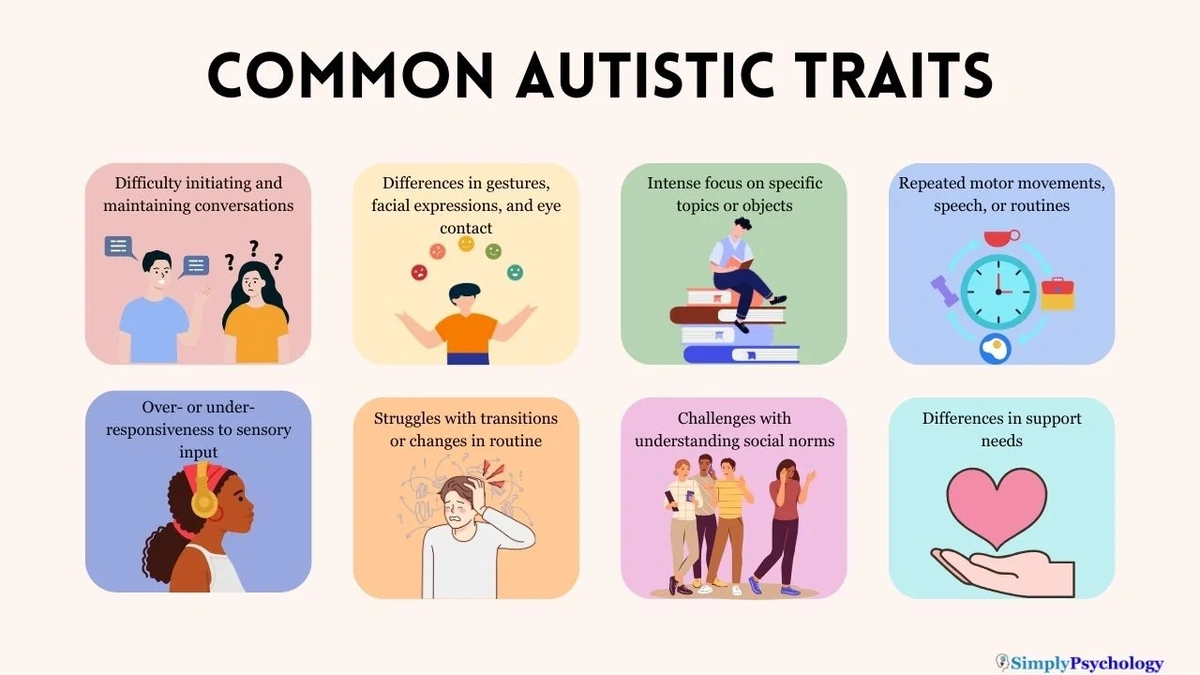Autism. You’ve probably heard the word. Maybe you know someone with autism spectrum disorder (ASD) . But let’s be honest, how much do you really understand about it? It’s not just about savant abilities or social awkwardness – it’s a complex, often misunderstood condition that impacts individuals in profoundly different ways. And that, I think, is what fascinates me. We need to go beyond the stereotypes and dig into the real, human experience of living with autism.
What is Autism, Really? A Deeper Dive

Here’s the thing: Autism isn’t a single thing; it’s a spectrum. Think of it like a dial, not an on/off switch. Some individuals might have significant challenges with communication and social interaction, while others have milder symptoms. According to the Centers for Disease Control and Prevention (CDC), ASD affects an estimated 1 in 36 children in the United States. That’s a significant number, and it highlights the importance of understanding this condition. But, more importantly, it’s important to see each person as an individual, not a statistic.
But why does this happen? What are the underlying causes of autism ? Well, that’s where things get a bit murky. Researchers believe it’s a combination of genetic and environmental factors. There’s no single “autism gene,” but certain genetic variations seem to increase the risk. And while environmental factors are still being studied, things like parental age, certain medications during pregnancy, and complications during birth might play a role. I initially thought this was straightforward, but then I realized how little we definitively know. It’s a puzzle we’re still piecing together. You can also find more resources at health information .
Navigating the Diagnosis | A Practical Guide
So, you suspect your child might be on the autism spectrum . What’s next? The diagnostic process can feel overwhelming, but it doesn’t have to be. First, talk to your pediatrician. They can perform an initial screening and refer you to specialists like developmental pediatricians, child psychologists, or neurologists. These professionals will conduct a thorough assessment, which might include observing your child’s behavior, interviewing you and your child, and administering standardized tests. Don’t be afraid to ask questions! A common mistake I see people make is not advocating for their child’s needs during this process.
And here’s the thing: early intervention is key. The sooner a child receives a diagnosis and begins treatment, the better their chances of developing their full potential. Treatment options can include things like speech therapy, occupational therapy, behavioral therapy (like Applied Behavior Analysis, or ABA), and social skills training. The one thing you absolutely must double-check is that the therapists are experienced and qualified to work with children with ASD .
The Emotional Landscape | Living with Autism
Let’s be honest, living with autism – whether you’re the individual or a family member – can be emotionally challenging. There can be feelings of frustration, isolation, and overwhelm. Individuals with autism may struggle with social interactions, communication, and sensory sensitivities, leading to anxiety and meltdowns. Parents often face immense pressure to navigate a complex system of services and support, all while trying to provide the best possible life for their child. It’s a marathon, not a sprint, and it’s okay to ask for help.
But amidst the challenges, there’s also immense joy, pride, and love. People with autism often have unique strengths and talents, whether it’s a passion for a particular subject, an incredible memory, or a remarkable ability to focus. And the love and connection within families can be incredibly strong. What fascinates me is the resilience and the unwavering dedication I see in the autism community.
The Importance of Acceptance and Inclusion
Ultimately, understanding autism comes down to acceptance and inclusion. We need to create a world where individuals with autism feel valued, respected, and supported. This means educating ourselves about the condition, challenging stereotypes, and advocating for policies that promote inclusion in schools, workplaces, and communities. It also means creating safe and supportive environments where people with autism can be themselves, without fear of judgment or discrimination.
And it starts with small things. Simple things, like being patient, understanding that communication might look different, and celebrating neurodiversity. I think that’s where we start to see real change. It’s about understanding that different isn’t deficient; it’s just different.
It’s also important to consider sensory processing disorder which can often co-occur with autism . Recognizing and accommodating sensory sensitivities can significantly improve the quality of life for individuals with autism .
Frequently Asked Questions (FAQ)
What are some common signs of autism in young children?
Some common signs include delays in speech and language, difficulty with social interaction, repetitive behaviors, and sensory sensitivities.
What if I think my child might have autism?
Talk to your pediatrician or family doctor. They can perform an initial screening and refer you to specialists for further evaluation.
Is there a cure for autism?
There is currently no cure for autism, but early intervention and therapies can significantly improve a person’s quality of life.
How can I support someone with autism?
Educate yourself about autism, be patient and understanding, and advocate for inclusion in your community. You can also check out this health related article .
What are some resources for families of children with autism?
The Autism Society, Autism Speaks, and the National Autistic Society are good places to start. They offer information, support, and resources for families affected by autism.
Here’s the real takeaway: Understanding autism isn’t just about facts and figures; it’s about empathy, compassion, and creating a more inclusive world for everyone. It’s about recognizing the unique strengths and talents that individuals with autism bring to our society, and celebrating neurodiversity in all its forms.




